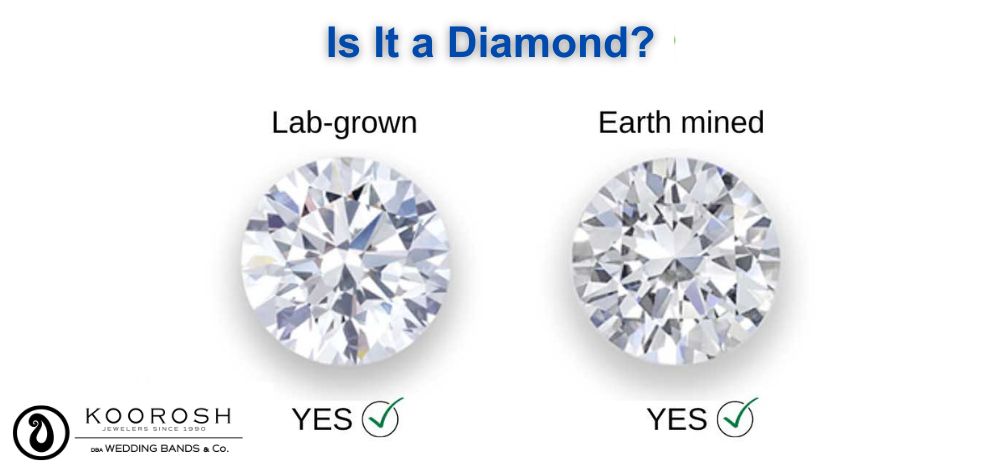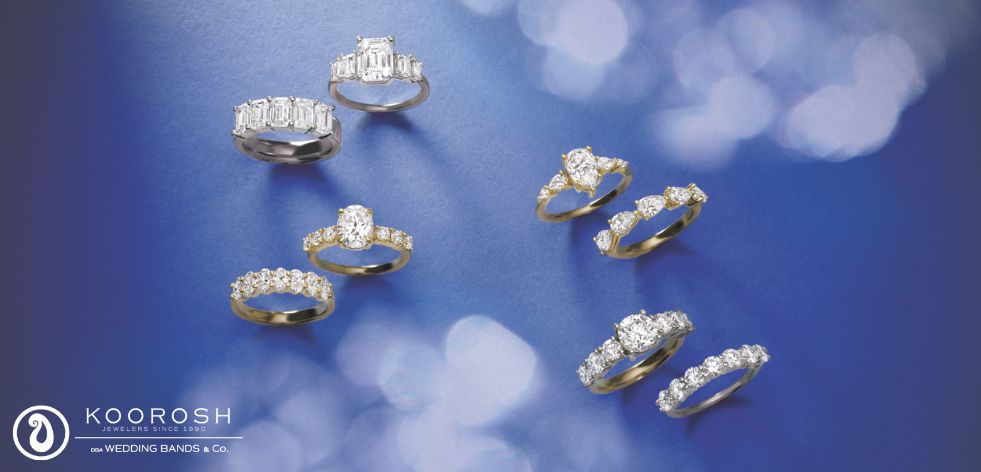Lab Grown Diamonds Price
Posted by Koorosh Daneshgar on Dec 22nd 2024

The significantly lower price of lab-grown diamonds has made them an appealing choice for many buyers. One of the main dilemmas clients face when visiting our store is whether to choose a lab-grown diamond or a natural one. This post explores lab-grown diamond pricing in Chicago and provides insights for budget-conscious shoppers.
Understanding Lab-Grown Diamond Prices
Lab-grown diamond prices depend on several factors, including clarity, color, and carat weight. Typically, lab-grown diamonds cost at least 20% less than natural diamonds. For rare colored diamonds, the price difference is even more dramatic. For example, a 3-carat mined diamond can cost up to three times more than its lab-grown counterpart. If budget is a primary consideration, lab-grown diamonds offer excellent value without sacrificing beauty or quality.
What Are Lab-Grown Diamonds?
Lab-grown diamonds, also known as curated, lab-created, or cultured diamonds, are real diamonds produced in controlled laboratory environments rather than formed naturally beneath the Earth’s surface. These diamonds are chemically, physically, and optically identical to natural diamonds. Thanks to advancements in technology, lab-grown diamonds now match the quality and appearance of natural diamonds, offering a sustainable and affordable alternative.
For more information, check out this blog post: Lab Grown Diamonds vs Natural Diamonds: How Are They Different?
How Are Lab-Grown Diamonds Made?
There are two primary methods for creating lab-grown diamonds:
1. High Pressure-High Temperature (HPHT)
This method mimics the natural diamond formation process. A diamond seed and carbon are exposed to intense heat and pressure inside a specialized chamber. After a few weeks, the diamond grows and is cut and polished for jewelry use. Although effective, this method is energy-intensive and less commonly used.
2. Chemical Vapor Deposition (CVD)
In the CVD method, a diamond seed is placed on a tungsten disk in a chamber filled with hydrogen and methane gas. When heated to extreme temperatures, these gases form a plasma that causes the diamond to grow layer by layer. CVD diamonds are of exceptional quality and require less energy compared to HPHT.
Both methods produce diamonds that are indistinguishable from natural ones, even to professional jewelers.

Are Lab-Grown Diamonds Real?
Yes, lab-grown diamonds are real diamonds. They share the same chemical composition, hardness, brilliance, and beauty as natural diamonds. The key difference lies in their origin: natural diamonds form over billions of years deep within the Earth, while lab-grown diamonds are created in a few weeks under controlled conditions.
The Value of Lab-Grown Diamonds
Lab-grown diamonds provide value in three key areas:
1. Financial Value
Lab-grown diamonds are more affordable than natural diamonds. For example, a 2-carat lab-grown diamond may cost between $8,000 and $12,000, whereas a 4-carat D-VVS1 lab diamond costs around $95,000—still significantly less than a natural diamond of comparable quality.
2. Social and Environmental Value
- Environmental Impact: Lab-grown diamonds are considered more eco-friendly, as mining natural diamonds can cause environmental degradation.
- Ethical Considerations: Lab-grown diamonds eliminate concerns about labor exploitation often associated with diamond mining.
3. Customizable Options
Lab-grown diamonds offer a broader range of colors and sizes at a more affordable price point, allowing buyers to choose rare and unique styles without exceeding their budget.
Are Lab-Grown Diamonds Cheaper?
Upon reviewing the current market data, the price difference between lab-created diamonds and natural diamonds varies significantly based on carat weight, color, clarity, and other factors.
For instance, a 1.00 carat lab-grown diamond can range from approximately $918 to $1096.
In contrast, a natural diamond of the same carat weight typically costs between $1032 and $2257.
As carat weight increases, the price disparity becomes more pronounced.
It's important to note that while lab-grown diamonds offer a more affordable alternative, their prices have been decreasing over time due to advancements in production technology and increased supply.
Natural diamonds, on the other hand, have experienced price fluctuations influenced by various market factors.
When comparing diamonds, it's crucial to consider the 4Cs—carat, color, clarity, and cut—as these factors collectively determine a diamond's value and price.
Do Lab-Grown Diamonds Hold Their Value?
While natural diamonds typically retain value better over time, lab-grown diamonds are gaining traction in the market. Reports suggest that approximately 70% of consumers are open to purchasing lab-grown diamonds. The market for lab-grown diamonds is growing annually by 15% to 20%, indicating potential for future resale value.
Can Lab-Grown Diamonds Be Insured and Certified?
Lab-grown diamonds can be insured and certified just like natural diamonds. Certification labs such as GIA, IGI, and GCAL provide detailed reports on carat weight, color, clarity, cut, and the production method (HPHT or CVD). Insurance options include: Jewelry Insurance: Covers theft, loss, or damage. Self-Insurance: Setting aside funds to replace the diamond in case of loss.

Lab-Grown Diamond Engagement Rings
Lab-grown diamonds are an excellent choice for engagement rings, offering ethical, environmental, and financial benefits. They’re indistinguishable from natural diamonds, making them an appealing option for many couples.
Why Choose a Lab-Grown Diamond Engagement Ring?
- Ethical sourcing
- Eco-friendly
- Larger diamonds at a lower cost
Why Choose a Natural Diamond Engagement Ring?
- Long-term investment value
- Preference for natural formation
- Greater perceived uniqueness
Where to Buy Lab-Grown Diamonds in Chicago
Wedding Bands & Company has been a trusted source for lab-grown and natural diamonds in Chicago for over 20 years. Our showroom is located at 43 E Oak St. fl 2, Chicago, IL 60611
Schedule a personalized consultation to design your dream engagement ring: Schedule an Appointment



